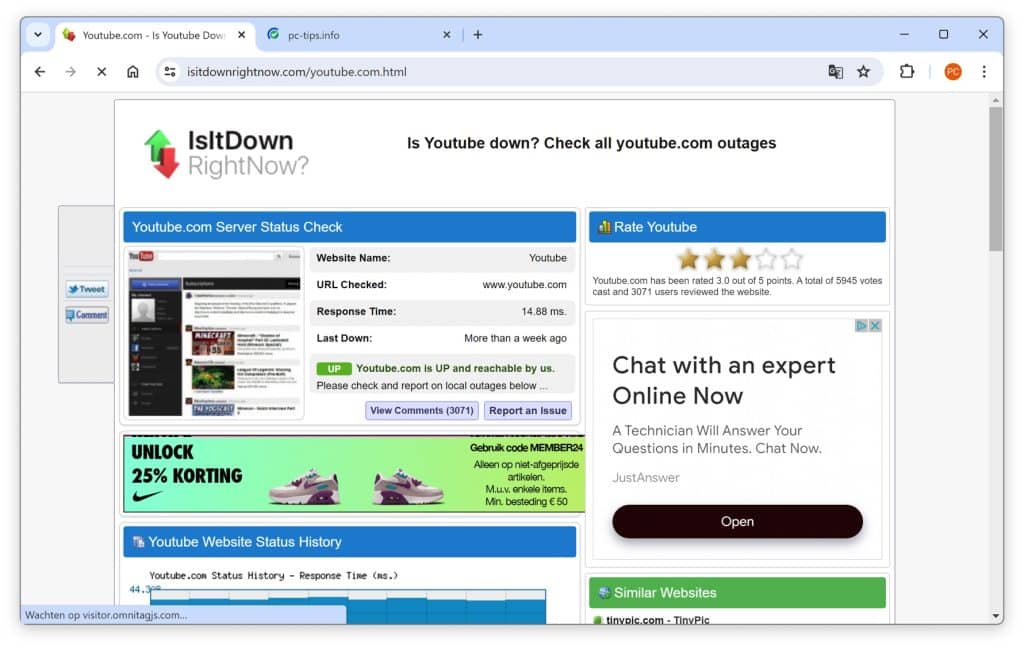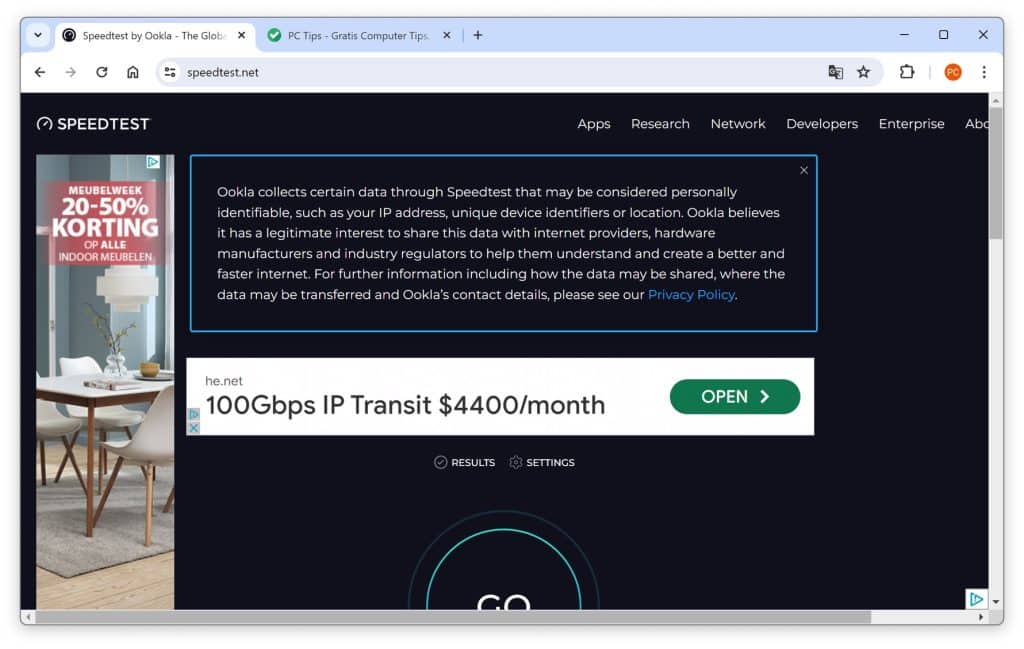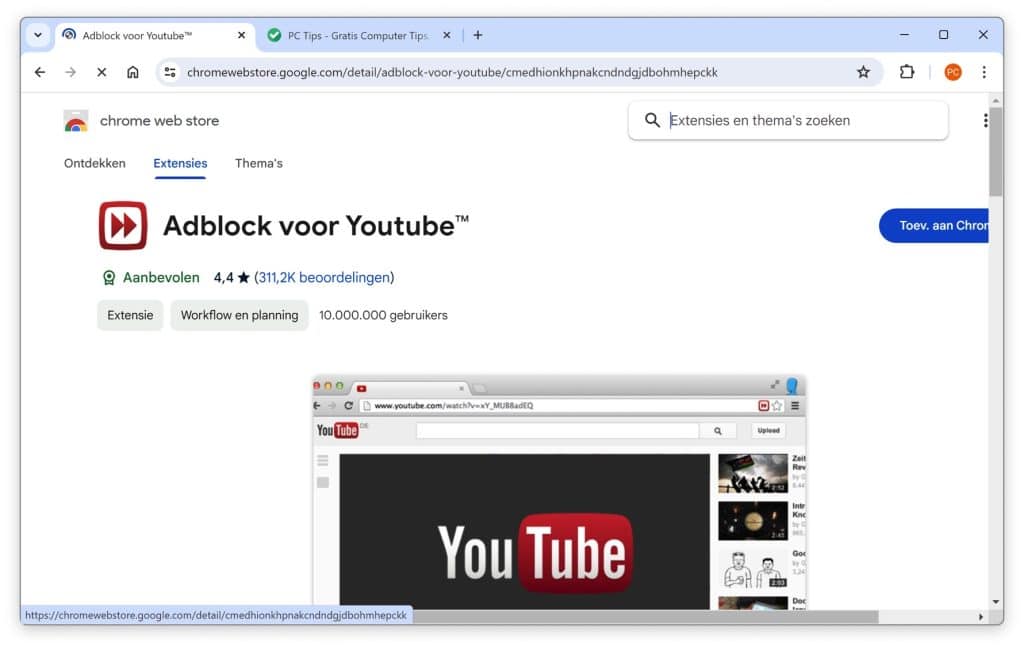It is a problem that is often reported; YouTube won't play. The reason why YouTube won't play videos varies greatly.
This can range from temporary server problems at YouTube itself to problems with the user's internet connection. Disruptions in connectivity or low bandwidth can significantly impact the video stream, causing videos to buffer or not start at all.
Additionally, settings on the user's computer or smartphone, such as outdated software, browser issues, or conflicting browser extensions, can also contribute to playback issues.
It is therefore important to go through a series of steps, such as checking the internet connection, updating software and possibly disabling interfering extensions, to determine the cause of the problem and resolve it. In this article, we'll walk through these steps to help you troubleshoot YouTube issues.
YouTube won't play
Check YouTube status
To start, I recommend checking that there are no issues surrounding the status of YouTube itself. If you do not first check whether there are any malfunctions, you will be searching for nothing on your own device to solve the problem and this would be a waste of time.
There are several websites that track statuses from services such as YouTube. You can check these websites to see if several people are experiencing a problem with YouTube.

You could also search Twitter (X) for the hashtag #youtube to see if any issues are being tweeted about.
Check your internet connection
If there are no problems with YouTube, it could be a temporary glitch in your own internet connection. This may be the case, for example, if YouTube problems suddenly arise for no apparent reason, such as videos that do not load or load slowly or if the quality of the videos is suddenly very low.
I recommend testing your internet connection for speed. The speed of your internet connection determines the quality of YouTube videos if it suddenly decreases. If the videos do not load or load slowly, the internet speed could also be the problem. By checking whether your internet speed offers what you paid for, you can rule out whether this is the problem.
You can check the speed of your internet connection on the website: Speedtest.

If there is a problem with a slow connection, start by turning off your router for 10 seconds. Then turn the router back on and check if the problem is resolved. If not, please contact your internet provider's helpdesk.
Are you connected to the internet via a VPN or Proxy server?
In line with the above. Check if you are connected to a VPN or proxy server. Some VPN services can block or slow down YouTube unintentionally. The best part is that you are directly connected to the internet without any other types of connections in between. If you are connected to a VPN and want to leave it that way, try switching to a different VPN server to see if this solves the problem.
Are you connected to the Internet through a work or school connection?
If the problems on YouTube suddenly arise, I recommend checking how you are connected to the Internet. If you are using a laptop, check if you are connected to a Wi-Fi network that may be blocking your connection to YouTube. Some work or school environments block YouTube to increase productivity. If the connection blocks YouTube because YouTube cannot be displayed at all, connect to a different Wi-Fi network.
Restart your device
Do you use a specific device such as a computer, phone, tablet or other type of device? Then start by restarting this device. A restart allows processes to restart, this is often a good and simple solution to immediately solve temporary problems.
Check your browser
YouTube problems can arise in the browser. This is especially the case if a browser extension is installed that changes or blocks the connection to YouTube. It is therefore advisable to check if you have made any changes to the browser recently. This includes installing browser extension(s) or changing certain settings.
Remove browser extension in Google Chrome
- Open Chrome.
- Click on the three dots at the top right to open the menu.
- Go to “More tools” and choose “Extensions”.
- You will see a list of installed extensions. Click “Remove” for the extension you want to remove.
- Confirm the deletion by clicking “Delete” in the pop-up window.
Remove browser extension in Mozilla Firefox
- Open Firefox.
- Click on the three horizontal lines in the top right corner to open the menu.
- Select “Add-ons & Themes”.
- Click “Extensions” on the side of the window.
- Click on the three dots next to the extension you want to remove and select “Remove”.
- Confirm if necessary.
Remove browser extension in Microsoft Edge
- Open Edge.
- Click on the three dots in the top right corner to open the menu.
- Select “Extensions”.
- Find the extension you want to remove and click “Remove”.
- Confirm the deletion by clicking “Delete” in the pop-up window.
Remove browser extension in Safari (Mac only)
- Open Safari.
- Go to “Safari” in the menu bar and choose “Preferences”.
- Click on the “Extensions” tab.
- Select the extension you want to remove and click “Remove”.
- Confirm the deletion.
As a test, you can use a different browser to see if it can load YouTube. If that works, you can reset the browser settings where YouTube is not working to default values.
Restore Google Chrome to default values
- Open Chrome.
- Click on the three dots at the top right to open the menu.
- Go to Settings".
- Scroll down and click “Advanced” to see more options.
- Under the “Reset and cleanup” section you will find “Reset settings to original defaults”. Click on this.
- A dialog box will appear asking you to confirm the reset. Click on “Reset”.
Restore Mozilla Firefox to default values
- Open Firefox.
- Click on the three horizontal lines in the top right corner to open the menu.
- Choose “Help” and then “Troubleshooting Information”.
- Click the “Refresh Firefox” button on the right.
- You will see a warning about what the refresh entails. If you want to continue, click “Refresh”.
Restore Microsoft Edge to default values
- Open Edge.
- Click on the three dots in the top right corner to open the menu.
- Go to Settings".
- Choose “Reset Settings” on the left.
- Click “Restore settings to their default values”.
- Confirm by clicking “Reset” in the pop-up window.
Restore Safari (Mac only) to default values
- Open Safari.
- Go to “Safari” in the menu bar and choose “Reset Safari”.
- Select what exactly you want to reset, such as history or all website data.
- Click on “Reset”.
Look for software conflicts
Some software may conflict with YouTube. A good example of this is security software such as an antivirus or an ad blocker. If you use this type of software, please add YouTube to the list of exceptions. This helps you avoid conflicts and allows you to play YouTube videos without being blocked.

I hope these tips helped you solve the YouTube problem. I have tried to provide truly effective tips that anyone can understand, with or without technical knowledge. Thank you for reading!

